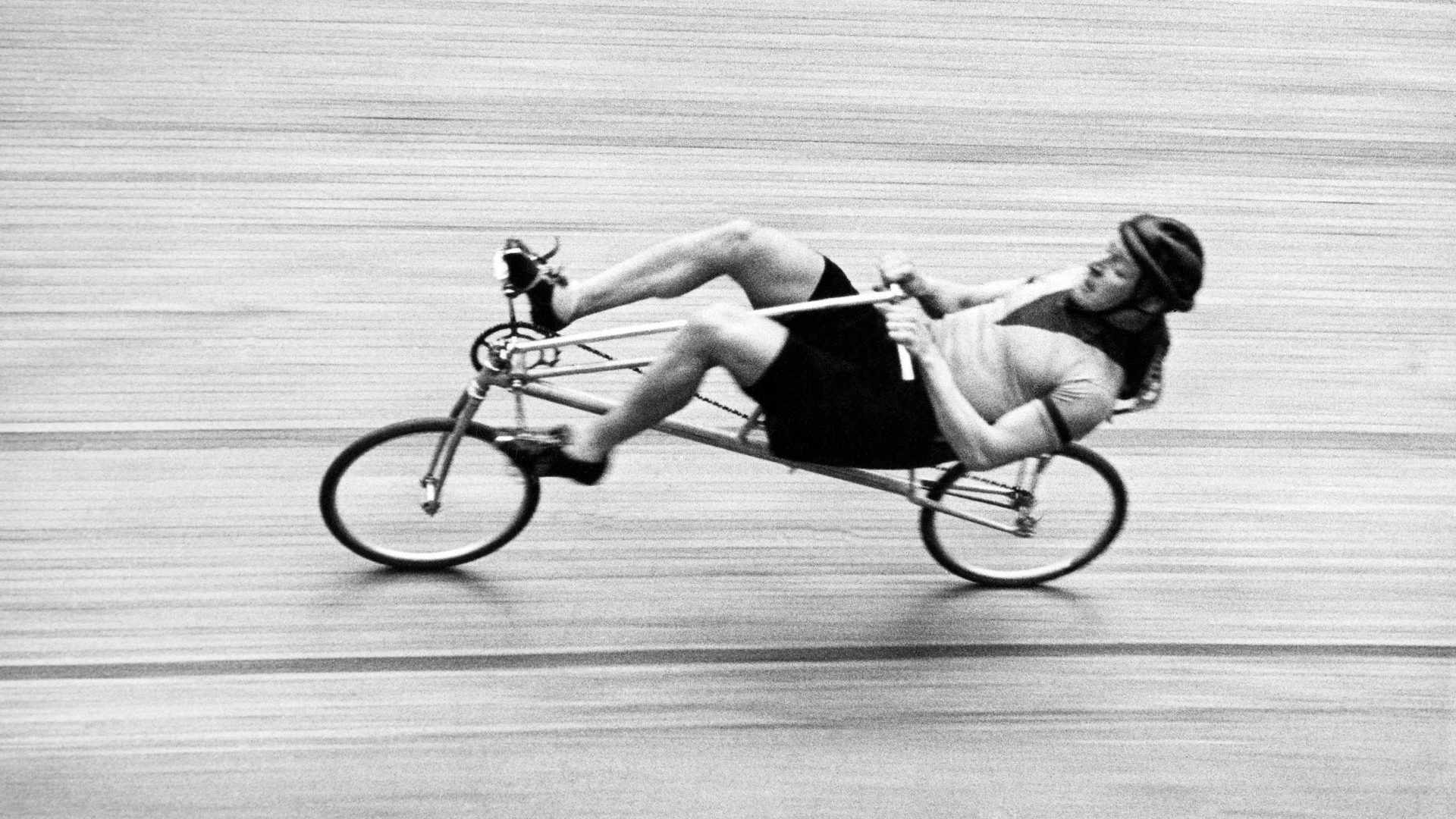If the bicycle hadn’t previously existed, would we design the same machine in 2022? The modern bicycle persists, largely unchanged in terms of riding dynamics and biomechanics, for two essential reasons.
Firstly, because it’s good enough – it takes professional riders 3,000km around France every July at average speeds of over 40km/h at one end of
the spectrum, and millions of commuters and utility riders quickly and quietly about their business, at the other.
Secondly, the Union Cycliste Internationale (UCI) enshrined the modern bicycle into its current form by banning Charles Mochet’s worldbeating design in 1933.
This was effectively a “speciation event” – the bicycle went from a potentially improvable instrument into a cultural object that now had to conform to arbitrarily applied rules. It had become a species.
This speciation event took place when designer Charles Mochet and local racer Francis Faure decided to take on Oscar Egg’s 1914 Hour Record (the distance ridden within a one-hour timeframe) of 44.247km. Egg’s record had stood for 20 years and was universally considered to be unbeatable.
Faure, the equivalent of a secondcategory racer, was not given much chance of taking the record at an open event against a few professional riders, who were also making attempts.
Mochet and Faure were careful to get the blessing of the all-powerful UCI for his Velocar “recumbant” design. On the day, Faure was mocked by his fellow competitors. But Mochet had done his homework and the hilarity stopped once Faure’s track speed was clear.
By the end of the hour, Faure and Mochet had added almost a whole kilometre to Egg’s unassailable record, at 45.028km. Charles Mochet’s ultimate dream was to provide France with a low-cost, sustainable form of
transport as the country struggled with a lack of resources, particularly petrol, following the first world war. The Faure Velocar gave him proof of concept to launch microcars powered by pedal, or a mixture of pedal and motor assistance.
The dashing of his dream is cycling’s speciation event. The UCI, after lobbying from the French bicycle manufacturers and the car industry, immediately annulled Faure and Mochet’s record. At the same time,
they also banned the design from all competition.
Two months later, the UCI prescriptively laid down very precise criteria for the definition of a bike. The ease with which Faure took Oscar Egg’s hour record terrified the French car and bicycle industries. They used the blunt power of the UCI to define what a bicycle was and still is, to this day.
This eradicated the record and destroyed Mochet’s plans. He died a year later.
The UCI has relentlessly continued this narrow definition of what constitutes a bicycle to this day and has never been timid of throwing its weight around to enforce its singular will.
Some 60 years later, Scotland’s Graeme Obree and his own interpretation of what constitutes a bicycle once again invoked the wrath of the UCI. Obree was born with a predisposition to be an outstanding athlete but, almost more importantly, to be able to think, engineer and improve human-to-machine solutions better than any athlete before or since.
Obree’s own struggles with the UCI from the outside seem to have a mythic David and Goliath quality. In his competitive life, Obree broke three world records: in 1993, 1994 and 2013. And he was twice banned by the UCI for equipment violations. Faure and Mochet would certainly have empathised. Obree’s most recent insights were to free his mind from Victorian constraints and to reimagine a machine that would perfectly express our bipedal potential, turn it though 90 degrees, and create a machine he could ride at 91km/h.
So why has the bicycle design survived, despite the UCI, if it’s so bad? It’s survived for nearly 150 years, precisely because it’s actually not that bad. In fact, it’s reasonably good at low-to moderate power outputs. We typically only use between 10 and 25% of our theoretical maximum power when cycling. Most people ride most of the time at between 60 and 400 watts, which is a small fraction of what they are capable of as an explosive effort. And if we need to use short bursts of big power we tend to stand up on the pedals as if we’re climbing stairs, or sprinting away from an attacking lion.
The Victorians went off in two predominant directions, the pennyfarthing and the modern safety bicycle – it was the Betamax v VHS, iPhone v Android format war of the late 19th century. In this instance, the right design probably won, so we can at least be grateful we weren’t left with the penny-farthing as the dominant bicycle design – luckily the UCI wasn’t created until 1900, so couldn’t get involved in this debate!
One can only imagine the carnage we could have now, commuting, racing and training on modern pennyfarthings – the NHS would be overwhelmed! I suspect that this could have happened had the UCI existed in 1890, and decreed for political reasons that the competition species of “bicycle” had to look like a penny-farthing, and the early manufacturers invested in it as the
dominant design.
This is known as “path dependence”, or the “butterfly effect”, whereby decisions that are made for social and political reasons have significant ramifications across the generations, which can be surprisingly difficult to reverse.
Another example of this is the QWERTY keyboard I’m staring at hopelessly now, because I never learned to touch type. The QWERTY keyboard design, in an ironic twist, is a direct contemporary of the modern bicycle. It was devised by a Wisconsin newspaper editor and printer, Christopher Sholes, in the 1870s.
The QWERTY design was an innovative solution intended to stop early typewriters getting stuck, as frequently used key bars clattered together. While this has had absolutely no relevance for at least the last 50 years, we continue to use the QWERTY layout on all of our devices – it’s anachronistic and inefficient but, so far, has unwaveringly resisted revision from Apple, Microsoft, Google and others. A 150-year-old design, which made sense in a
previous era, but which confoundingly persists to this day.
Sound familiar? The QWERTY keyboard and bicycle are both flawed anachronisms that have so far resisted revision, largely for political,
financial and cultural reasons.
Extracted from The Midlife Cyclist by Phil Cavell, published by Bloomsbury



